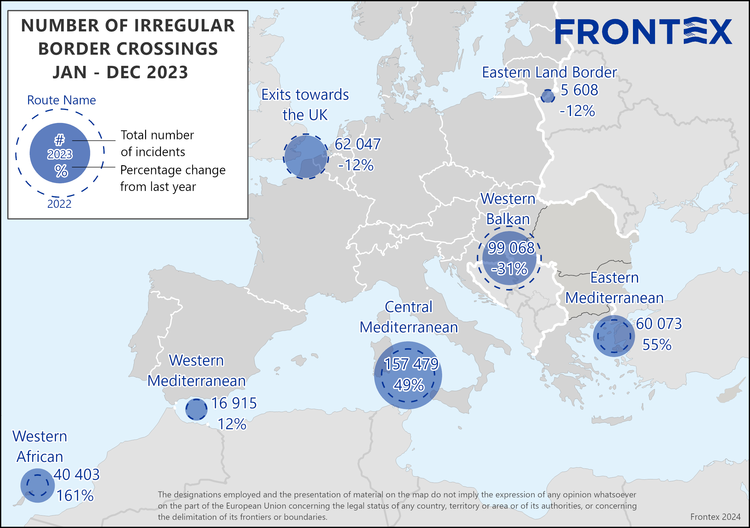Almost 380 thousand irregular migrants arrived at the external borders of the European Union last year, the highest level since 2016 and an increase of 17% compared to 2022, also thanks to the increase in landings in the central Mediterranean, where Italy is on the front line. It has announced today the European Border and Coast Guard Agency (Frontex), according to which these data confirm the constantly upward trend of the last three years.

“The Central Mediterranean was the most active migratory route to the EU in 2023, accounting for two in five irregular crossings (41%), followed by the Western Balkans (26%) and the Eastern Mediterranean (16%),” reads the note issued by Frontex. According to the European agency, at least 157,479 migrants have arrived in the EU via the central Mediterranean route to Italy and Malta.
Most of these people, according to the data presented at the end of the year by the Ministry of the Interior, have landed in Italy. At least 155,754 migrants arrived in our country by sea last year, almost 50% more than in 2022 (103,846) and double that of 2021 (67,040).
Most of the irregular migrants who arrived in Europe last year were Syrians (over 100 thousand), followed by Guineans and Afghans. “These three nationalities represent over a third of all arrivals,” we read in the Frontex note, according to which, however, 47% of the irregular migrants who arrived at the EU borders last year came from West Africa. There is also an increase in women, who represent 10% of arrivals, and unaccompanied minors (another 10%).
“The numbers presented today show the ever-evolving challenges we face in managing the EU's external borders,” said Frontex Executive Director Hans Leijtens. “We remain committed to ensuring the security and integrity of the EU's borders. It is equally crucial to address the humanitarian aspects of migration. These figures represent not just statistics but real people.”
#Frontex #record #year #arrivals #irregular #migrants #Europe
